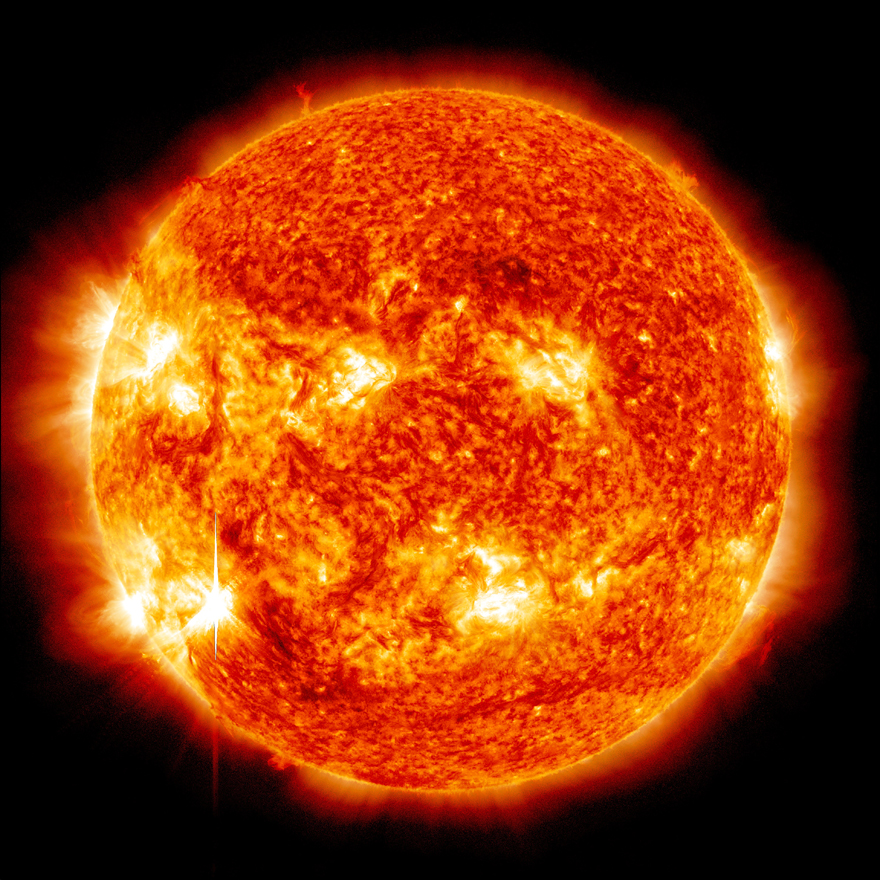Fact sheet: Star

Located about 150 million kilometres from Earth, our Sun is just one of about 250 billion stars in our Milky Way Galaxy. (Credit: NASA/SDO)
Description
A star is a giant ball of hot gas that can be compared to a huge engine – hydrogen is its primary fuel. Atoms in the core of stars join together in a physical reaction known as nuclear fusion, releasing large amounts of light and heat energy. Most stars have planets orbiting them.
Examples
- Located at the centre of our solar system, our Sun is the most well-studied star.
- The next closest star to Earth is Proxima Centauri. Polaris, or the North Star, is often used as a point of reference for navigation.
Size
Typically, stars can range from just one-tenth the size of the Sun to nearly 2,000 times larger than the Sun. The Sun has a diameter of 1.4 million kilometres.
Mass
Scientists use the characteristics of our Sun as a reference for other stars. For example, the mass of our Sun forms the basis of a unit known as solar mass. The amount of matter contained in a star can range from only 7.5% of one solar mass to 150 solar masses. Smaller stars are much more common than giant ones.
Temperature
Surprisingly, the hottest part of a star is not its surface or its core, but the corona, the outermost aura or halo of superhot plasma. Stellar coronas can have temperatures of several million degrees. A star's surface is much cooler, typically ranging from 3,000 to 50,000 degrees Celsius.
Appearance
Since all stars (except for our Sun) are very far away, they appear as tiny dots in our night sky. The colour of a star is determined by its temperature and can range from blue-white (hotter) to red-brown (colder). Stars can have dark spots or flares visible on their surface.
Location
Stars are found throughout galaxies and usually orbit the centre of those galaxies. For example, our Sun orbits the centre of the Milky Way Galaxy at 828,000 km/h. Even at such a speed, it still takes the Sun about 230 million years to complete a full orbit. Stars often exist in groups of two or more. Some stars are even found in clusters which can contain millions of stars.
The brightest star in the night sky is Sirius A, also known as the Dog Star because it is located in the constellation Canis Major. When observing from the northern hemisphere, you're most likely to spot Sirius A in a southern direction. Use our stargazing tips to try spotting some of your favourite stars and constellations tonight!